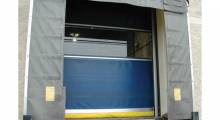What were the two words I heard most often at ISM 2015? Innovation and transformation. They both were covered by the umbrellas of strategic sourcing and supplier relationship management.
You may wonder what a materials handling guy is doing at a procurement conference. Fair question. Besides the fact that I also edit Supply Chain Management Review, there’s evidence that at the best companies, the different functions in the supply chain all have to work together. Exhibit number 1: HighJump just added procurement functionality to its suite of supply chain execution solutions.
Of course, it makes sense that our colleagues would be enticed by innovation and transformation. Everyone in the profession, from manufacturing to logistics and transportation, to distribution – and sourcing – wants to elevate their discipline within the organization. What’s more, who doesn’t want to automate the mundane transactions associated with issuing a PO, arranging a shipment, or scheduling a wave of orders so they can lead an effort to transform their department or have a role in new product or process development and innovation?
So where are we? Certainly headway is being made. In the last two issues of SCMR, we’ve run stories about how Molson Coors is integrating supply management into its new product development process and how Raytheon is launching a supplier advisory council in its journey to become the Customer Of Choice – the one that gets access to supplier innovation first. Closer to home, the May cover story in Modern Materials Handling details how Southern Wine & Spirits is deploying automation as part of its supply chain transformation - and is innovating with a new sourcing center.
At the same time, there’s a long way to go. “When you talk to CFOs, which is where the rubber hits the road, they are still focused on cost reduction,” says Chris Sawchuck, a principal at The Hackett Group and a proponent of strategic sourcing, transformation and innovation.
So do we all have to cut costs or can we have it all? That push-pull was illustrated during the Q&A that followed a presentation on supplier relationship management by Sawchuck and Mark Fortney, an executive with Staples Advantage. Sawchuck and Fortney discussed innovation and transformation in their presentations. When it got to the Q&A, one category manager for a CPG company raised her hand and said that she is constantly being asked to innovate. “I’m not very creative,” she said. “But when we talk to suppliers, we know they are experts that have solutions that align with our business needs. We really need to learn to listen to them.”
That led to a great conversation about the challenges of trying to innovate and cut costs that would have gone on all morning if we hadn’t had to clear the room for the next session.
Done right, it seems that procurement - and materials handling - can do all three – transform its processes, innovate with suppliers and deliver cost savings to the total cost of a product or service. But it also seems as if the profession, just like our friends in manufacturing, logistics, and distribution, have to convince the C suite of the value what we do in our various supply chain disciplines can deliver.







